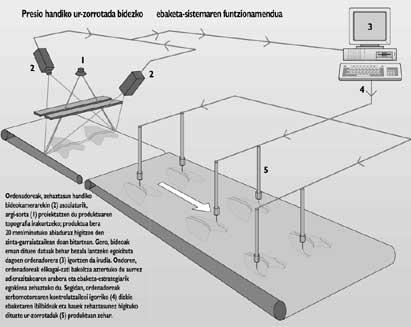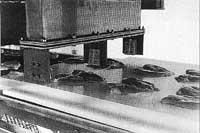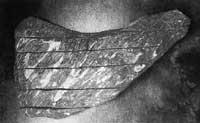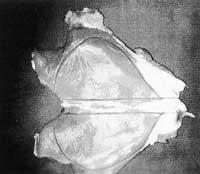High pressure water jet cutting
Working with a conventional system, in addition to requiring many hours, can result in laborious and resilient work, especially when large quantities of production are needed.
However, conventional cutting systems are changing and in order to analyze their cause a wide variety of factors must be taken into account: consumer demand, the advancement of technology and, of course, the development of automatic or mechanized cutting systems.
The computer-aided water jet cutting system is the one that has generated the most astonishment among new technologies. This process was first used by the DSI company in the U.S. city of Richmond. This company is a subsidiary of the Swedish company Frigoscandia Fool Processing Systems.

This cutting machine uses the camcorder to read the product, the computer to calculate the cutting strategy and a very fine high pressure water jet to cut the food clean and safely.
Why change?

Most food processors are still based on manual cutting, so labor is the main factor that directly influences the final cost of the product. On the other hand, the fork is increasingly demanding and seeks a precise and uniform cut. Food awareness has also increased and aims to obtain the same nutritional value and caloric content as the same piece size by the ration you consume.
This technology also solves the different production problems presented to manufacturers. A traditional system of hand cutting of chickens requires 22 operators and to achieve the same level of productivity with this machine are enough 10. In addition, manufacturers who accept this system recognize that workplace accidents or casualties have decreased since they use the new system.
According to a recent study conducted in the United States, 60% of new occupational diseases are related to metacarpal syndrome and back pain and other injuries related to repetitive movements have prevailed. This type of injury generated a cost of $100 billion in 1994, so it’s no wonder the U.S. government wants to control the so-called “epidemic of repetitive motion injuries.”

Manufacturers using automatic cutting systems benefit from improved hygiene. Cleaning of scissors, knives and scalers is frequent to meet current sanitary requirements. With the new technology things change: no metal sheets are used that disperse pollution, no waste is accumulated and contact between man and product is minimal.
Increased performance and added value
Fragments can be cut with cutting machines using pressurized water jet, with precision, efficiency and impossible manual cutting speed. The results obtained are not only to produce more in less time (with fewer people), but also to increase the performance of the products and increase the added value. This system practically rejects human errors.
Technological development

Below is the operation of the high pressure water jet cutting system. The computer, associated with a high precision camcorder, projects a beam of light to read the topography of the product, while the product itself moves at a speed of 20 mm / minute on the belt conveyor. The image is then sent to the appropriate computer to work properly the data that the video has provided.
The computer will then analyze each part of the food as indicated above and determine the most appropriate cutting strategy. Then the computer will send servo motor drivers the cutting paths and they will accurately move water jets along the product.
To achieve total isolation in this type of food, which in itself arouses many suspicions, electronic components and servo motors are located in a control panel with double insulated doors.

On the other hand, water jets occur when the water passes through very high pressure fine pipes prepared for it. The pressure can be easily adjusted according to the type of product to be cut and used in an interval between 25,000 and 55,000 psi.
These systems are very effective in cutting the thighs, breasts, fillets and tendons of chicken and turkey, white fish such as salmon and cod, as well as pork, cow and sheep fillets.
As for productivity, some examples are: It can cut more than 2.5 tons of chicken per hour or its equivalent in 140 breasts per minute. In fish, one ton per hour. In some models of this machine this productivity capacity doubles.
The future of the system

However, there are reasons that limit the diffusion of this technology and, despite its simplicity, have its influence. The main ones are ignorance of the technology itself and lack of confidence in what the team can do. Most manufacturers who have benefited from this technology, despite showing their reluctance to technology, have recognized that, overcoming the applications they initially wanted, they have found new applications.
The companies that benefit from this technology have been able to demonstrate that with labor savings the equipment can be amortized for a year and even increase the commercial diffusion of conventional and new products.
Systems such as high-pressure water jet cutting will decisively influence the development of food industries, responding to consumer demand, improving production, increasing flexibility and obtaining great benefits.





